#@theuncannyprofessoro
Text
Old-Time Tradition: Folk Musicals
Newsies 1992 (Kenny Ortega)
"Newsies" is a musical drama film inspired by the true story of the Newsboys' Strike of 1899 in New York City. It follows a group of young newsboys, led by Jack Kelly, played by a very young Christian Bale, as they band together to fight against unfair working conditions and a price hike for newspapers by the powerful publishing titans of the time, culminating in a historic strike that challenges the injustices of the era.

What do the musical numbers signify about identity in the course of the film’s narrative?
In "Newsies," musical numbers deeply intertwine with the narrative to highlight the newsboys' collective and individual identities, showcasing their unity, dreams, and resilience against injustice. Songs like "Seize the Day" articulate their collective struggle and aspirations, while others such as "Santa Fe" reveal personal desires and conflicts. These performances not only act as a powerful form of resistance but also chart the newsboys' growth and transformation, embodying their hopeful and indomitable spirit.
youtube
What is the purpose of the songs in the characters’ lives?
"Newsies" uses its musical numbers not just for entertainment but as a vital narrative tool that advances the plot and deepens character development. For example, "Carrying the Banner" sets the stage for the entire film, introducing the audience to the daily grind and aspirations of the newsboys. This song, like others in the film, serves a dual purpose: it's both an exposition and a unifying anthem that binds the newsboys together, showcasing their shared struggles and dreams. The songs in "Newsies" articulate the characters' desires for fairness, belonging, and recognition, transforming individual grievances into a collective call to action. Through music, the film navigates themes of solidarity, resistance, and the pursuit of justice, making the characters' internal motivations and external conflicts resonate with the audience on an emotional level.
youtube
In what ways are the songs and/or musical performances racialized and/or gendered?
While the focus of "Newsies" is predominantly on the male characters, the roles of Sarah Jacobs and Medda Larkson offer insights into the film's approach to gender representation. The focus on a predominantly male group of newsboys subtly reflects the historical context and gender dynamics of the labor force. Sarah's character, though not central to the plot, provides a subtle commentary on the domestic and supportive roles relegated to women during the period. Her interactions with the male characters add depth to the narrative, offering a glimpse into the personal stakes involved in the newsboys' strike. Medda Larkson, on the other hand, represents a figure of autonomy and influence. Her performance in "High Times Hard Times" is the only showcase of her character's talent. It also serves as a moment of solidarity with the newsboys' cause. These characters, though operating on the margins of the main narrative, underscore the film's engagement with gender dynamics amidst a predominantly male-driven story.

youtube
What elements of the film align with White musicals’ longing to transform the ordinary into utopia?
Dyer's analysis highlights a characteristic longing in White musicals to transform the ordinary into a utopia. "Newsies" embodies this longing through its rousing musical numbers that idealize the power of unity and collective action. Songs like "Seize the Day," "Santa Fe" and "King of New York" encapsulate the characters' aspirations for a better life, transcending their immediate realities through the euphoria of musical expression. This utopian vision is a hallmark of the traditional musical genre, resonating with the notion that communal effort and determination can lead to significant social change.
youtube
How does the film reflect the temporal circularity of Black musicals?
Dyer discusses the temporal circularity of Black musicals, contrasting it with the linear progression often found in White musicals. "Newsies," however, aligns more closely with the linear narrative progression typical of White musicals. This narrative structure emphasizes growth, change, and the possibility of a better future. The film culminates in a negotiated victory for the newsboys, symbolized by the triumphant reprise of key musical themes. This resolution reflects the characters' journey from oppression to empowerment, underscoring the film's investment in the idea of progress and the efficacy of collective action. "Newsies" thus concludes on a note of optimism, suggesting that change is achievable and that unity can lead to meaningful social transformation.
youtube
"Newsies" presents a rich tapestry of struggle, growth, and triumph, encapsulated through its memorable musical numbers and characters. The film's exploration of solidarity, justice, and the power of collective voice resonates with audiences, offering a spirited take on historical events while engaging with broader themes of identity, community, and resistance.

Discussion Questions
Considering the portrayal of collective identity in Newsies, how might this portrayal differ in a black musical with a similar theme of resistance or social change?
How important do you think individual character development is in stories that are primarily focused on group struggles? Can personal dreams coexist with collective goals without overshadowing them?
Explore how the hopeful and indomitable spirit communicated through the musical numbers in Newsies compares with the portrayal of hope and resistance in black musicals. What might these differences or similarities say about cultural perspectives on struggle and change?
Why might ending a story on a hopeful note be particularly impactful in narratives dealing with social and economic challenges? How does hope influence the audience's reception of the story's message?
20 notes
·
View notes
Text
Discussion Leader Panel Presentation - Race and Representation
youtube
While the song “Can’t Hold Us Down” by Christina Aguilera1 is mostly about female empowerment and resisting gender stereotypes, the music video conveys even more, with stark imagery of a community that is made up primarily of people of color. The intersectionality that the video possesses is key to understanding its message. In Stuart Hall’s essay “What is this ‘black’ in black popular culture?2,” he introduces his idea that the “Black” in Black popular culture is not a set idea, rather it is a fluid conversation of Blackness. In his words, “What we are talking about is the struggle over cultural hegemony, which is these days waged as much in popular culture as anywhere else”3. While, as I stated earlier, on the surface this video is about what it means to be a woman, its underlying themes are of race and representation, which is the real battle being fought. This intersectionality is still key to Hall’s philosophy. As he says, “We are always in negotiation, not with a single set of oppositions that place us always in the same relation to others, but with a series of different positionalities”4. Aguilera’s exploration of themes of sexuality while using the backdrop of a primarily people-of-color community is this video’s way of continuing the conversation about what it means to be “Black”, or in the video’s case, simply “other”.
“The Other” is a concept Edouard Edward Said introduces in his seminal book Orientalism5. In the context of the Orient, better known as Asia, he states that “The Orient is not only adjacent to Europe; it is also the place of Europe’s greatest and richest and oldest colonies, the source of its civilizations and languages, its cultural contestant, and one of its deepest and most recurring images of the other”6. He goes on to say that Europe sees Asia as “its contrasting image, idea, personality, experience”7, yet it is “an integral of European material civilization and culture”7. While Aguilera’s video does not explicitly speak about Orientalism, some key themes are very present. In Orientalism, Said refers to the way Asia is perceived as “‘a place of romance, exotic beings, haunting memories and landscapes, remarkable experiences”6. Essentially, Orientalism places emphasis on the mystification of Asian culture, through the power of European colonialism. The environment Aguilera’s video is set in is extremely colorful, and, as previously mentioned, mostly populated with people of color. Most of the very few white people in this video appear in the beginning, shown throwing milk into the street below. This can be seen as a representation of Orientalist themes. The white people are placed above the people of color who populate the streets below, and throw milk onto them, which can represent the Orientalist turn of imposing Euro-centricity on the culture of those colonized and disenfranchised.
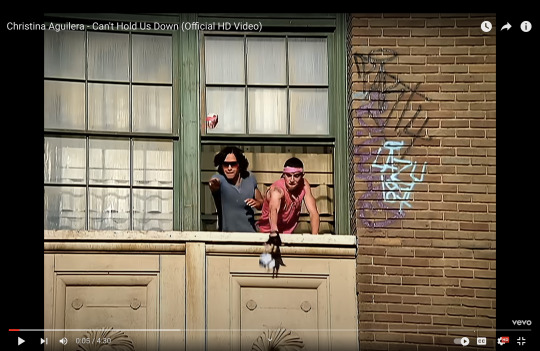
Of course, the question must be asked, is this music video an authentic representation of the culture and community that it’s presenting to us? In their book Unthinking Eurocentrism8, Ella Shohat and Robert Stam consider the way that race and representation exist in the media. Under the section “Writing Hollywood And Race” in the chapter “Stereotype, Realism And The Struggle Over Representation,” they argue that there is an important distinction between media image and social reality. They use the documentary Color Adjustment to help their argument, stating that “Color Adjustment underlines this contrast between media image and social reality by suggestively juxtaposing sitcom episodes with documentary street footage”9. I’d like to pose the thought that perhaps Aguilera’s video would fall under the category of sitcom in this comparison, at least when it comes to the ideas of race and representation. Aguilera, who is of Ecuadorian, German, Irish, Welsh, and Dutch descent, did not grow up in people of color dominated areas of New York. She lived in Wexford, PA for most of her adolescence, a town in a majority-white county. This music video may feel inauthentic to many because it may not be authentic to Aguilera’s experiences. Which brings me to Kendrick Lamar
youtube
Kendrick Lamar grew up in Compton, CA, at a time when the city’s high crime rates were national news, due to the prominence of gangster rap groups like NWA. The music video for his song “i”10 showcases this environment prominently. From the cars to the police uniforms, the video harkens back to a time when Kendrick was growing up in South Central Los Angeles. In my estimation, Kendrick Lamar’s video represents more of the “documentary footage” that Shohat and Stam mentioned in their comparison with media image and social reality. Aguilera’s video can be felt as inauthentic because it feels like a sitcom, not in a comedic way but in a matter of faux reality. Kendrick’s video feels like a documentary because of its groundedness in his childhood and the experiences of his city. It should be noted that Aguilera appears to darken her skin in her video.
As previously stated, Hall believes that popular culture is a place where the concept of “Black” is able to be conversed about. Kendrick, in his music video for “i”, is able to redefine “Blackness” on his own terms. He presents different depictions of Black characters in every moment. One moment that shows great contrast of character and incredible conversation in his own mind on the topic of “Blackness” comes at the 2:20 mark in the video for “i”11.

Kendrick walks past a house, on the front porch of which a man yells at a woman; presumably they are in a relationship. In this very same moment, two Black children, one boy and one girl, run by, playing together, juxtaposing the depiction of adult negativity behind them. There are many things that can be interpreted from this shot, which perhaps even greater lends itself to the argument that it is more “documentary footage”. The perceived authenticity of Kendrick Lamar’s “i” video thus lends itself to a challenge of Orientalist ideals. While the video does show White police officers arresting a Black man at 1:4312, seemingly exerting that idea of power over “the other” that Orientalism is built so much upon, it is immediately followed by Kendrick and his crew of dancers/partygoers weaving through the group of cops with numbers that far outweigh what the cops possess, thus re-establishing power over themselves.

Works Cited
1Aguilera, Christina. “Christina Aguilera - Can’t Hold Us Down (Official HD Video).” YouTube, November 18, 2009. https://www.youtube.com/watch?v=dg8QgUIKXHw&t=196s.
2Hall, Stuart. “What Is This ‘Black’ in Black Popular Culture?” Essay. In Critical Dialogues in Cultural Studies. London, United Kingdom: Routledge, 1996.
3Hall. “What Is This ‘Black’ in Black Popular Culture?”, 471
4Hall. “What Is This ‘Black’ in Black Popular Culture?”, 476
5Said, Edward. “Introduction.” Essay. In Orientalism. London, United Kingdom: Routledge, 1978.
6Said. Orientalism, 9
7Said. Orientalism, 10
8Shohat, Ella, and Robert Stam. “Stereotype, Realism And The Struggle Over Representation.” Essay. In Unthinking Eurocentrism. New York, NY: Routledge, 1994.
9Shohat and Stam. “Stereotype, Realism And The Struggle Over Representation”, 198
10Lamar, Kendrick. “Kendrick Lamar - i (Official Video).” YouTube, November 4, 2014. https://www.youtube.com/watch?v=8aShfolR6w8.
11Lamar. “i”, 2:20
12Lamar. “i”, 1:43
Discussion Questions
Can the darkening of one’s skin make the work feel more authentic, and when might this backfire?
Does either video engage in stereotype, and if so, does it detract from the video or benefit it?
Is fair to compare the music videos for these songs, though the lyrics of the songs convey such different messages, and can a music video change a son’s message?
10 notes
·
View notes
Text
Queen Charlotte: A Bridgerton Story (History Redesigned Panel Presentation)

What is the koinos kosmos (common world) and mutually assumed knowledge the series shares with viewers?
Queen Charlotte and the Man in the High Castle both invite viewers to consider an alternative historical reality that results from a slightly different course of history. Both shows challenge the viewer to consider the different paths that history can take and to suspend some disbelief to imagine alternative worlds. In both shows, the viewers can be expected to know what is historically accurate. The true Queen Charlotte was a German princess selected to marry the future George III. In The Man in the High Castle, the viewer can be assumed to know that the allies, not the axis powers, won World War II. But both shows provide the viewer with a chance to wonder “What If?” What if a mixed woman from Germany was selected to become Queen? What if the axis countries had won the war. In describing Philip Dick’s The Man in the High Castle, James Thrall writes, of “Dick’s overarching project of inviting his readers to consider history itself as fluid by presenting our assumed past set slightly askew.” Indeed both shows present altered versions of the agreed-upon past. The Man in the High Castle presents a fictitious New York City ruled by the Nazi party and a San Francisco administered by the Japanese. Queen Charlotte: A Bridgerton Story presents a fictitious Britain in the late 18th century in which the German young woman Charlotte of Mecklenburg-Strelitz has risen to prominence and power. In the show, Charlotte was brought from Germany to be the wife of King George III, an event that mirrors agreed-upon history. However, unlike the woman who was actually selected, Charlotte in the TV show is of mixed race, raising questions about the openness of the royal court and the British people to a ruler with a mixed race identity.
youtube
How does the series depict cultural hybridity through the altered history’s role in reflecting and reshaping cultural assumptions?
Queen Charlotte: A Bridgerton Story depicts cultural hybridity by imagining that the Queen of Britain and Ireland played by a mixed girl. The show plays out one possible version of how history might have looked with a mixed girl marrying the future king. Much of the show focuses on how different parts of British society react to a mixed race Queen, which would have been the first in British history. The Man in the High Castle also involves culture clash as the Germans are imagined to control the Eastern Coast of the United States while the Japanese control the West Coast. James Thrall writes, “His characters muse regularly about differences between types of people as indicated by, for example, distinguishing characteristics of Germans and Japanese. The rippling image of fused flags that concludes the credits encapsulates Dick’s presentation of these two countries as linked but uneasy and culturally distinct allies.” The interactions between the German and Japanese occupiers represents an important plotline in the show.
In Queen Charlotte: A Bridgerton Story, the presence of a mixed race Queen leads to some shifts toward a more inclusive society that receives a mixed response. After hearing from Lord Bute that there will be talk about Charlotte’s race and being told that it might be best to cancel the wedding, the King’s mother, the Dowager Princess, who thinks it’s too late to cancel, says it’s only a problem if the palace makes it a problem. She then says that people from Charlotte’s “court” are invited to the royal wedding. Later in the episode, at the wedding, the Dowager Princess continues this shift to a more inclusive nobility. She refers to Mr. Danbury, a Black British citizen, as “Lord Danbury,” which surprises him. The Dowager Princess says that he “shall be receiving the official proclamation from the King. You are honored to be Lord and Lady Danbury now. All the members of the ton must be titled.” She then goes on to say that it is time they were united as a society.
In episode 2, Lady Danbury tells the Dowager Princess that she needs her husband not to be denied entry to White’s, for him to be invited on hunts, for her to be able to cross the street to the best modiste, to take the finest seats at the opera. When the Dowager Princess says that this is unreasonable, Lady Danbury reminds her that she needs to know what is going on at Buckingham House and says that they need to be equal members of the ton.
The Danbury Ball in episode 3 is another example of cultural hybridity and reshaping cultural assumptions. After Lady Danbury expresses to the Dowager Princess that she would like to host the first ball of the season, the Dowager Princess is appalled and says it will not be accepted, to which Lady Danbury says that it would be difficult for the Dowager Princess to hear about the Queen being with child long after the fact. The Dowager Princess says she will take it up with Lord Bute, but later that day, before the Dowager Princess can come to a decision, Lady Danbury decides that she will just have to send out invitations first. The White members of the ton are reluctant to come until they receive a personal message from the King that he will be attending. During Charlotte and George’s dance at the ball, Lord Ledger, who is White, asks Lady Danbury to dance, which prompts more mixed pairings to be made. Later that night, George tells Charlotte that “with one evening, one party, we have created more change, stepped forward more than Britain has in the last century.”
youtube
How does the series depict the power of understanding world-creation?
Queen Charlotte: A Bridgerton Story exists in the world of lavish, opulent wealth of the British royal family. Queen Charlotte lives in a huge mansion with intricate furnishings. She has an entourage that dresses her in the morning, feeds her, and watches her as she eats. She has elaborate, high-style clothing and shoes. She wears expensive jewelry and her hair is fashioned in elaborate hairdos. In addition to the opulence and privilege, her movements are carefully prescribed and often criticized. There are members of the court who gossip about her and are seemingly in control her life. And, to her dismay, her new husband seems completely uninterested in spending time with her. Through scenery, costumes and styling, Queen Charlotte: A Bridgerton Story transports the viewer to the world of British royalty. This ability to create a compelling and unfamiliar world is powerful as it invites the viewer to escape their daily life and become part of a world that is intriguing and beautiful even with its flaws.

In what ways do formulations of the past, present, and future engage with prospective realities of what might have been and what might be in the series’ altered history?
Both Queen Charlotte: A Bridgerton Story and The Man in the High Tower start with a different possible reality. They consider what might have been, but wasn’t, and the story unfolds from there. As James Thrall writes, Margaret Atwood, author of The Handmaid's Tale stated, ‘[p]rophecies are really about now. In science fiction it’s always about now. What else could it be about? There is no future. There are many possibilities, but we do not know which one we are going to have’. Queen Charlotte tackles the fallout from one possible choice, one possible reality.
There are two timelines present in Queen Charlotte. One takes place in the present of Bridgerton, beginning in 1817 with the death of the royal heir Princess Charlotte, which causes the Queen to pressure her children into producing another royal heir. The other timeline begins in 1761 with Charlotte meeting and marrying King George III. This timeline explores the King and Queen’s marriage and the King’s mental illness.
In episode 3, after being told by the Dowager Princess to cancel her ball, Lady Danbury goes to talk to Charlotte about it. She asks if Charlotte could encourage the other ladies-in-waiting to attend. Charlotte doesn’t understand what the issue is. Lady Danbury says that the Dowager Princess asked her to cancel the ball. Charlotte wants to know how it applies to her. Lady Danbury says that Charlotte is the Queen and has that power. If she were not the Queen, her life in London would be completely different. She is the first of her kind. She opened the door and the titles given to Lady Danbury and the other colored folk of the ton are brand new. She tells Charlotte that she should focus on the fate of the country as she hold its fate in her hands. She accuses Charlotte of being unaware of what’s happening outside the palace walls. This scene shows that there is a decision point surrounding whether the ball will be held, and with time it is clear that the ball had a major impact on creating change in the ton.
In episode 5, colored members of the ton meet with Lady Danbury and ask her what will happen now that the Lord Danbury has passed on. Lord Danbury is the first member of their side to pass on and the rules for inheritance have not been established. They want to know if Lady Danbury’s 4-year-old son will inherit the title, if the laws of succession from “their side” will apply to “our side.” Lady Danbury says she never realized, that they could lose it all in a generation. This too is a critically important inflection point because if the title ends with Lord Danbury, the transition to a more inclusive society would essentially end.
How do multiple realities or contemplations of multiple realities merge with questions of authenticity?
There are two different questions of authenticity in Queen Charlotte that exist at different levels but ultimately merge and inform the other. At one level, there is the question of alternative reality being depicted. The TV show tells a story that did not actually occur as there was a real George III, who was married to Queen Charlotte, but she was not mixed race. On one level, the writers are attempting to convince the audience that this alternative reality is plausible, that 18th century English royalty, in hunting for a mate for the king, might select a woman like Queen Charlotte, and that a similar narrative could transpire. From this perspective, the writers seek to establish some level of authenticity in their attempt to convince the audience that this narrative represents a story that could have taken place.
At another level, within the story, the royal court is attempting to convince the rest of England that the woman they have selected to be Queen is in fact a legitimate Queen of England. In “The Great Experiment” they seek to convince any doubters of Charlotte’s suitability for the throne. This level of authenticity within the show also hinges on the same issue of whether Charlotte can convince the English nobility and population at large that she is an authentic Queen. In episode 2, Charlotte’s authenticity as Queen is said to hinge on whether she and George III consummate the marriage, something that everyone, including George’s mother, is concerned about. Indeed, in the present timeline, their concerns are warranted as George leaves the palace and spends all of his time at the observatory after his honeymoon, leaving Charlotte completely alone. However, through the flash forwards, the audience learns that George and Charlotte will have 15 children in the future.
20 notes
·
View notes
Text
Intro Vid
16 notes
·
View notes
Text
Roundtable: Sunshine on Leith
Sunshine on Leith tells the story of two soldiers, Ally and Davy, returning home to Edinburgh after a tour of duty in Afghanistan.

The social aspects of "Sunshine on Leith" are mirrored perfectly by the film's soundtrack, which consists mainly of songs by “The Proclaimers.” Some of the principal themes that we can see being explored in the movie are community, relationships, social class and identity, and the songs play a huge role in telling the stories. For example, “I’m gonna be (500 miles)” highlights the relationships, communal, familial, and romantic, between the characters. The flash-mob scene in Edinburgh's Princess Street reflects the importance of community and support networks while the cut to the other two scenes offers a much more intimate perspective on the struggles of having a loved one far away from home and/or being the person who returned home and finding a community and identity after living through such a traumatic experience. Similarly, “Letter from America”, speaks to feelings of longing, home, belonging, and the comfort found in familiar places. It underlines the importance of their hometown as a source of not only instability and solitude but also solace and familiarity—ironically.
youtube
The established history of The Proclaimers' songs adds another layer of meaning to "Sunshine on Leith" for audiences familiar with the band's earlier work, but it can reframe the audience's understanding of the songs, which are delivered in a much less punchy/rock style than their original versions. For instance, "Sunshine on Leith," a song traditionally played at funerals, adds depth to the emotional impact of the film. It is not played during a particular important scene but it is often playing softly during a scene of reflection or longing for home. On the other hand, a song like "Letter from America," written about long-distance relationships in general, becomes more poignant when applied to the specific context of war and separation after Jean and Liz’s intimate conversation in the film.
youtube
The music that drives the score of "Sunshine on Leith'' can be classified as a combination of folk rock and pub rock. The latter is a genre associated with The Proclaimers' music, which forms the backbone of the film's soundtrack. It often features acoustic guitars, sing-along choruses, and lyrics that deal with issues of the social realm, working-class experiences, and everyday life, which are elements that perfectly capture the film’s essence and the social fabric of it. On the other hand, while the film might not have full-blown pub scenes, the pub rock elements we find in the songs add a sense of vibrancy and camaraderie to the story.
“Sunshine on Leith" redefines the film as a musical by adding songs that provide a sense of gritty realism, reflecting the character’s working-class lives and the challenges they face after coming back from war. Folk rock and pub rock often have a more raw and unpolished sound compared to traditional musical scores. This choice adds a sense of gritty realism to the film, reflecting the characters' working-class lives and the challenges they face. The familiar melodies and relatable lyrics create a sense of shared experience within the film but also the audience, and unlike some musicals where the music takes center stage, this film uses its folk rock and pub rock score to enhance the story and characters. The music isn't just entertainment; it's an integral part of the narrative.
12 notes
·
View notes
Text
Pitch Perfect (2012) by Jason Moore

What are the social aspects within the film's narrative that align with the film's songs?
The film’s setting in a college aligns with the songs and narrative, as this enhances themes of social institution structures in regards to race, gender, and status. As Beca enters college with no friends, she tries to find a community through clubs that are rooted in the cliques and established ties. But, once she was discovered by Chloe, a member of the Bellas, she asks to audition for the acapella group due to the lack of members, leading Beca to audition and join the group. Through the Bellas', we see a mixed group of people with different backgrounds and personalities, leading Aubrey to try to change the groups differences to oneness. This brings Beca and Aubrey to be in constant division of each other, effecting the group's dynamic. These disagreements pass the borders of the off-stage and on-stage narrative, as quarrels that are based on their differing personalities are placed during their performances. But, as the narrative continues, they find community in each other through their love of music and singing together as a group. The film's focus on diversity and popular culture of the time through the connected genre of satirical comedy that is shown through both the characters and group relationships that connect to their college environment.
youtube
How do historiographies of previously recorded songs inform audience relationships with the musical's narrative and performers?
We see the different acapella groups use songs that correlate to their identities, as the TroubleMakers use songs that exert romance and desire through a male perspective that connects to their “bad boy” personalities and the Barden Bellas use songs that have been sung throughout the group's generations, which matches with their traditional looks that are expressed through their stage outfits, dance, and stuck-up personalities of some members. But, throughout the film, the relationship between the groups develops, and the final performances show a change in group dynamic that is expressed through song. We see these changes through their amping of their stage outfits, choreography, and choice of songs that range from "Price Tag" by Jessie J and "Give Me Everything" by Pitbull, Ne-yo, and Afrojack. Specifically, Beca's choice of singing "Don't You (Forget About Me)" by Simple Minds to send a message to Jessie, a member of the troublemakers, for a second chance, as the song is based off their time watching The Breakfast Club (1985). The chosen songs within the film are not merely to connect to the narrative, but rather the relationships of characters that are intertwined with songs that represent their growth individually and together as a group.
youtube
What musical genre/style drives the film's score, and how does the genre/style (re)define the film as a musical?
Through Beca's help, the group decides to ditch the songs of tradition and mix songs of different genres that reflects on Beca's background of DJing and aspirations of music production. This reflects the film's intentions of performing songs that are based on mixing of songs in the form of acapella. This comes with different stylistic sounds within each group and the creation of a refreshing take on the expanding genre of musical. A particular scene of the film known as the "Riff Off" is a game played by the acapella groups, as a chosen genre is picked and groups must sing songs in the genre and find a flow within each song that is sung through continuation of lyrics and beat. This game mirrors the idea of mixing songs, whilst using acapella as a way to create melody. This shows a modern take on musicals, as these genres were gaining popularity during this time.
youtube
10 notes
·
View notes
Text
Roundtable Presentation: Stormy Weather (1943)

Stormy Weather is a 1943 musical directed by Andrew L. Stone. Stormy Weather made history being one of the earliest films with an all-Black cast to be released by a major American studio (being released by Twentieth Century Fox). The film follows the story of Bill Williamson as he recounts it years later in a series of flashbacks which depict his return from serving in World War I. Upon returning to the US, Bill meets Selina, a famous singer and performer. Over the course of the film, Bill grows closer to Selina as he travels to New Orleans in order to pursue the dream of becoming a performer himself. The film is full of numbers which employ jazz and swing music from the early half of the twentieth century.
What are the social aspects within the film’s narrative that align with the film’s songs?
Stormy Weather uses its songs in order to develop the diegesis and tone of the film, in addition to exploring its themes further. The film’s focus on romance and connections between people is explored through its use of songs like “I Can’t Give You Anything But Love, Baby”, “Aint Misbehavin” or the titular “Stormy Weather”. The film pointedly distances itself from making commentary about larger societal and cultural issues, however, as the setting which the characters occupy is devoid of any mention of race or class.
youtube

How do the historiographies of previously recorded songs inform audience relationships with the musical’s narrative and performers?
The historiographies of previously recorded songs help to inform audience relationships with Stormy Weather’s story, characters, and relationships between characters. By intertwining the film’s narrative with familiar songs, Stormy Weather situates itself within the tradition of American jazz and swing. By employing songs which had already built rich histories in American musical tradition, Stormy Weather enriches its narrative centered around performance and art. These known, preexisting songs are used as short hand for narrative development and fit seamlessly into the conceit of the film.

What musical genre/style drives the film’s score, and how does the genre/style (re)define the film as a musical?
Stormy Weather primarily employs jazz standards in developing its sonic tapestry. Its choice of songs covers a century’s worth of music – from the mid-1800s to the 1940s. Many of the songs used by the film were written or originally performed by Black artists like Ethel Waters or Andy Rafaz. By highlighting jazz music in a film depicting an all-Black cast, Stormy Weather helps to reclaim jazz within the Black community after a generation of appropriation by white audiences.
However, as most of the creative body behind Stormy Weather was white, the film depicts Black characters and narratives through a white lens. The film employs minstrel songs in its catalogue like “De Camptown Races”. The song was written in inaccurate AAVE and was intended to be sung in minstrel shows by white performers wearing blackface. “De Camptown Races” was introduced by the Christey’s Minstrel in 1850 and would be performed in minstrel shows throughout the nineteenth century.
youtube
While Stormy Weather was historic for its representation of the Black community, it also perpetuated harmful stereotypes through its ties to minstrelsy. The film opened up opportunities for Black actors, singers, and dancers in Hollywood by highlighting Black talent in leading roles; however, it fell short of making any statement on the treatment of people of color within companies or studios and it offered little characterization for its cast, a result of its own ties to racism and racist attitudes.
10 notes
·
View notes
Text
Roundtable: Across the Universe (2007) dir. Julie Taymor
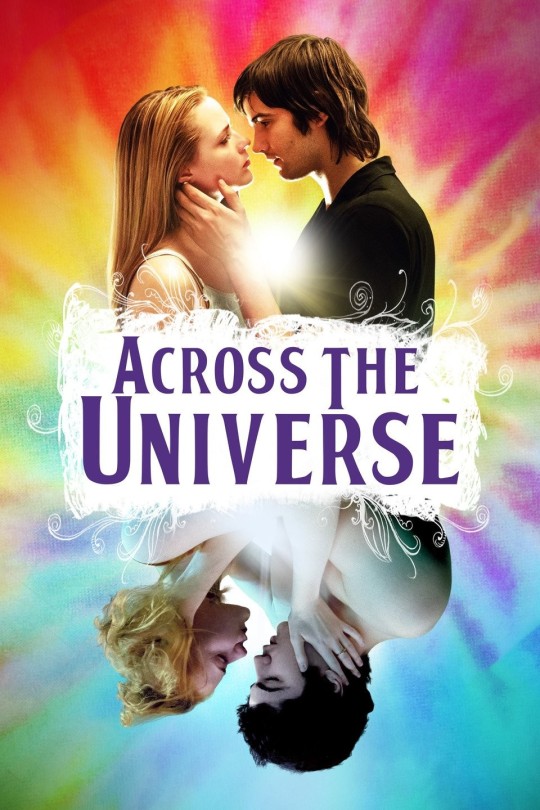
Across the Universe transforms thirty-three popular songs by The Beatles into a wacky musical odyssey that explores the highs and lows of youth counterculture movements in 1960s US and Britain. With major characters named Jude, Lucy, and Prudence who all have obvious namesakes from within the Beatles' discography, the lyrics and perspective of the bands' music informs the characters' attitudes and circumstances throughout the film. Though it's unclear whether the Beatles exist in the films' universe, which seems to be an imagined caricature of the 60s, its certain that Taymor believes their music captures the essence of the sixties, as the (mostly white and well-off) characters sorrowfully sing their way through the turmoil of the Vietnam War and the Civil Rights movement....

At times, this film relies on cinematic narrative expectations, and at others, the film feels like a two-hour long Beatles music video. Some creative risks are taken, such as an LSD-sequence or a highly choreographed interpretation of the military drafting process during the Vietnam War. Though the film is fun when it indulges in its wackiness, I found that it was stuck between following a narrative structure and subverting it, causing it to feel unsatisfying, disjointed and generally underdeveloped.
With this in mind, there's a lot of small characters and storylines that make the film a bit difficult to summarize. Here's a synopsis from Google:
When young British worker Jude (Jim Sturgess) sets sail for the United States in search of his father, he ends up meeting carefree college student Max (Joe Anderson) and his lovely sister, Lucy (Evan Rachel Wood), along with a cast of eccentric characters. As Jude and Lucy fall for each other, their relationship is threatened by the social upheaval that accompanies the Vietnam War.

Social Aspects Through Song
The "social aspects" of Across the Universe are conveyed through the films' songs in a way that is incredibly on-the-nose and un-subtle. In fact, nothing about this film is subtle. For instance, when unemployed artist Jude is upset with his booked and busy girlfriend for being too involved in the anti-war movement, he shows up at the nonprofit and starts singing "You say you want a revolution..." In another sequence, Max prepares to be screened for military service, and giant Uncle Sam posters come to life and start singing "I want you."
youtube
youtube
With such un-nuanced recreations of political events, I am unsure of what exactly this film is trying to say about the 1960s' political and social revolutions from a 2007 vantage point. On the contrary, perhaps the film is attempting to create an "objective" yet campy and fun retelling of 60s history with a focus on the youth, without deliberately trying to "say" anything new at all. With this non-argumentative lens, the film seems blissfully unaware of its own shortcomings, such as the unresolved sexism of its two male leads, or the surface-level characterization of Lucy and the heavily apparent absence of the second-wave feminist movement.
Perhaps the most questionable of this films missteps, though, is its treatment of race through song. The film's secondary cast features a queer Vietnamese female character, Prudence, who randomly disappears from the film a third of the way in. Then there is Jo-Jo. When it is revealed to the characters that Martin Luther King Jr. was assassinated, the film cuts to Jo-Jo, a Black man, singing at a bar, only to reveal that his sad song is actually about Sadie, the woman who left him. While social issues of race clearly loom over the characters' heads, the film employs the powers of the Beatles' "All You Need is Love" rhetoric to wash over any nuance pertaining to the topic. This is especially interesting since this rhetoric within actual hippie circles in the 1960s proved to be a clear failure.
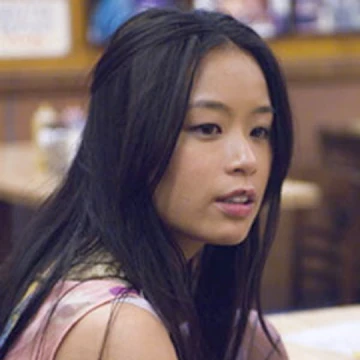
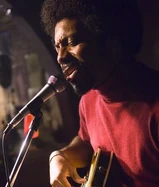
Musical Memories and Genre-bending
On the changing force of pop music within the movie musical format, Mira writes: "In assessing what pop songs bring to the musical, we must consider, firstly, that a song's meaning is conveyed not only through melody, rhythm, and lyrics: engaging with an audience's memories, viewpoints, and personal background can be powerful in unleashing meaning as well" (24). In this sense, I think Across the Universe transforms its musical source material and plays with audience's familiarity with its songs in a really fun and effective way.
The film's opening is a really great example of how it blends the audiences' diverging associations of a classic Hollywood musical versus a classic rock music video. These two juxtaposing numbers comprise the opening:
youtube
youtube
Within this introduction, we are already hit with three different musical styles: the Beatles' contemplative ballads through Jude, a more intense female rock voice, and a more classical "musical theatre" style through Lucy. However, all of the songs sung are by the same artist. In this way, the film often plays around with the melodies, keys, tempos, etc. of the original Beatles' songs in order to suit which character is singing a given song. I think this is a really clever way of making similar-sounding music feel dynamic enough to remain interesting for the span of a two-hour film while also serving practical narrative functions. The songs of the Beatles are also transformed to song like other artists or sub-genres of 60s rock and roll. For example, the character Sadie's songs are reminiscent of rock stars like Stevie Nicks or Janis Joplin, while Jo-Jo's skilled guitar playing is inspired by the likes of Jimi Hendrix. In this way, the film pays homage to several icons of the era, despite only using actual music created by one band of the time.
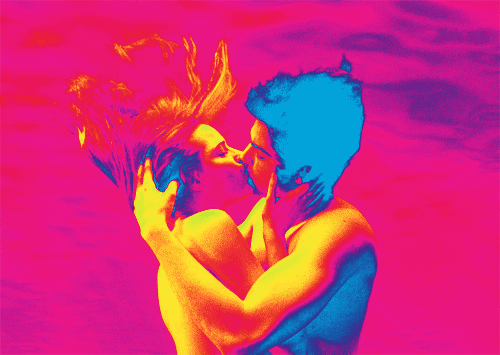
10 notes
·
View notes
Text
Roundtable 3: An American in Paris
"An American in Paris" is a classic musical from 1951, directed by Vincente Minnelli and featuring the lively music of George Gershwin. The film stars Gene Kelly as Jerry Mulligan, an American painter living in Paris, who falls in love with a beautiful dancer named Lise, played by Leslie Caron.

What are the social aspects within the film’s narrative that align with the film’s songs?
Cultural Exchange and Integration, "I Got Rhythm": Jerry Mulligan performs this song when surrounded by French children. The scene illustrates the cultural exchange between the American protagonist and the local Parisians. Jerry, who is an American, uses his charm and artistic flair to connect with French culture, which is receptive but also distinct. It symbolizing the blend and appreciation of different cultures.
youtube
Post-War Optimism and Recovery, “I’ll Build a Stairway to Paradise": Performed during a lavish nightclub scene, this song reflects the luxurious and escapist environments that became popular in post-war Europe as a way to move past the hardships of World War II. The entertainment industry, including nightclubs and music halls, played a crucial role in this societal recovery.
youtube
How do the historiographies of previously recorded songs inform audience relationships with the musical’s narrative and performers?
Period Reflection: The songs selected for the film not only reflect the musical zeitgeist of Gershwin's time but also evoke the vibrant energy of the Jazz Age and the subsequent years. This cultural embedding helps the audience connect the narrative’s setting—post-war Paris—with the broader historical narrative of American music and its influence.
Gene Kelly’s Star Power: Gene Kelly was not just an actor but a celebrated dancer and singer whose performances were major draws for audiences. His ability to embody the spirit of Gershwin’s music through dance (particularly evident in the ballet sequence) and song significantly influences how audiences perceive and connect with the film. Kelly's own history and persona as a performer add an additional layer of appreciation and engagement for the audience.
What musical genre/style drives the film’s score, and how does the genre/style (re)define the film as a musical?
The musical genre that primarily drives the score of "An American in Paris" is a fusion of classical and jazz music, uniquely embodied through the compositions of George Gershwin.
Redefining Musical Film Structure: Unlike many musicals of the time, which often featured scores written directly for the screen, "An American in Paris" uses a pre-existing, concert-oriented score that is adapted into the film's narrative. This approach allowed the film to explore more complex musical forms typically associated with the concert hall rather than the musical stage. The extended ballet sequence set to Gershwin‘s "An American in Paris" is a prime example, offering a narrative told almost entirely through dance and music, reminiscent of a classical ballet but infused with jazz energy.
Broadening Audience Appeal: The integration of jazz with classical music broadened the film's appeal, attracting not only traditional fans of musical theater but also those who appreciated more serious musical forms. This crossover appeal helped redefine what a musical film could be, making it both a popular entertainment medium and a serious artistic endeavor.
9 notes
·
View notes
Text
Roundtable 3: All That Jazz (1979) directed by Bob Fosse
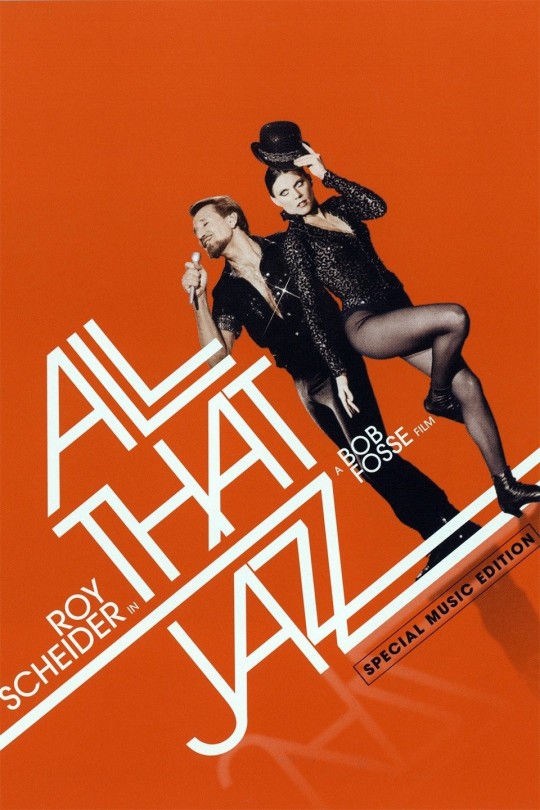
Question 1: What are the social aspects within the film’s narrative that align with the film’s songs?
The narrative of “All That Jazz” explores the dark side of entertainment. In the opening number, “On Broadway”, the audience is introduced to the allure of show business while being shown the grueling audition process.

The upbeat R&B song, performed by George Benson and popularized by The Drifters in 1963, complements the energized dancers and fast moving tryout. The lyrics of the song express longing and escapism, with the narrator dreaming of making it big on Broadway. However, beneath the glittering lights and promising opportunities lies a darker reality. The director, Joe Gideon, uses his artistic prowess and influence over the production to lead casting decisions based on who he wants to sleep with rather than talent.
He begins a sexual relationship with one of the dancers he chooses from the sequence, Veronica, and in a future scene he essentially breaks her down to tears in order to get the performance he wants out of her. To bring it back to “On Broadway”, the tension between the glamorous facade and the seedy underbelly of show business reflects another tension in the film which is a broader dichotomy in the entertainment world, where personal ambition often beats out artistic and personal integrity.
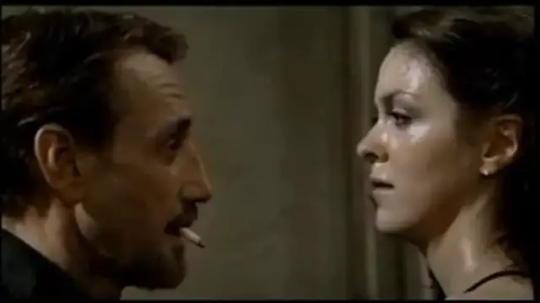
The scene between Veronica and Joe.
Another social aspect explored within the film’s narrative through song is the cyclical nature of life and art in “Everything Old is New Again”. The song was originally by Peter Allen in his 1974 album “Continental American”. As Joe grapples with his morality and attempts to reinvent himself creatively, the song serves as an important reminder of the cycle of birth, death, and rebirth, suggesting that trends and fashions often repeat over time. During the 1970s a large number of traditional values were being challenged and individuals sought to redefine themselves in the ever-changing and evolving world. Joe is able to find comfort and define himself with the comfort of the cyclical nature of art and life.
youtube
Question 2: How do the historiographies of previously recorded songs inform audience relationships with the musical’s narrative and performers?
The use of previously recorded songs in “All That Jazz” seeks to add layers of meaning to a specific audience familiar with their original contexts, an audience of Broadway and the style of bygone eras. For example, “Some of These Days”, a song associated with vaudeville performer Sophie Tucker, is used in a scene where Joe faces his mortality. Audiences familiar with Tucker’s career may interpret the song as a nod to the past, invoking a sense of nostalgia and paying homage to the rich history of stage productions and entertainment that predate Joe Gideon’s era which is inspired by Bob Fosse’s life.

Sophie Tucker
youtube
Similarly, “Bye Bye Love” originally by The Everly Brothers is used in a scene where Joe grapples with the dissolution of his relationships. The lyrics of the song become more significant in this context, reflecting Joe’s sense of loss and longing.
Question 3: What musical genre/style drives the film’s score, and how does the genre/style (re)define the film as a musical?
The music of “All That Jazz” encompasses a wide range of musical genres and styles including, jazz, pop, classic R&B, and traditional Broadway music. The eclectic mix reflect the diverse taste and influences of its director, Bob Fosse. By mixing the different genres, the film defies categorization and helps to redefine the musical genre.
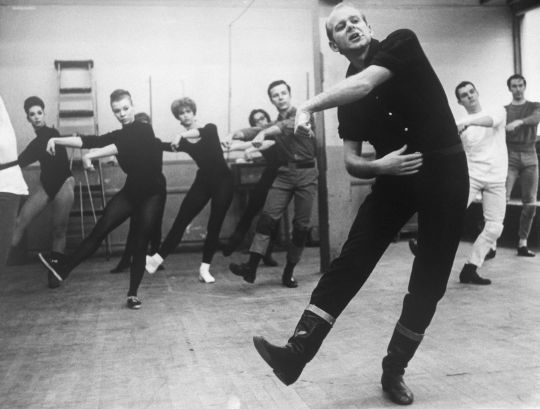
Bob Fosse in a situation similar to one we see Joe in many times during the film.
Unlike some jukebox musicals which adhere to a singular style or formula the film embraces experimentation and innovation. The film uses non-linear storytelling, surreal imagery, and unconventional musical numbers to challenge audience expectations. It doesn't feel like what one might think of as a musical, it feels more like a prolonged fever dream of a performance.

The Angel of Death that Joe converses with and performs for throughout the film in surreal scenes.
12 notes
·
View notes
Text
Roundtable Presentation: A Musical in Disguise: Moulin Rouge (2001).
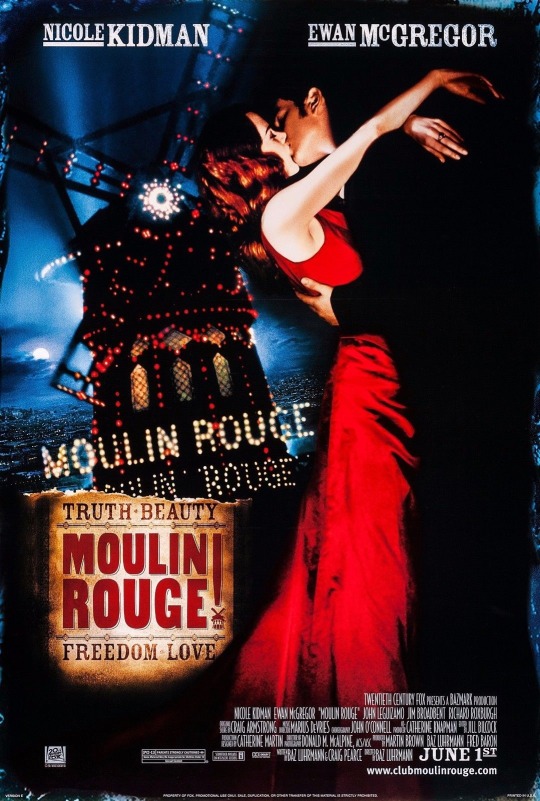
What are the social aspects within the film’s narrative that align with the film’s songs?
The film explores many social aspects throughout the course of the narrative, and they play extremely significant roles in the story and in providing context for the story. It explores themes of love, sin, societal norms, freedom, forbidden love, love, and ambition. I included forbidden love as being separate to love in this case because while love is an overarching theme, the narrative is as tragic as it is because the love is forbidden.
For example, to set the stage for the film contextually, we have three songs performed at the nightclub, Moulin Rouge, by Satine (Nicole Kidman) and an ensemble of the other nightclub performers. They perform "Lady Marmalade" which talks about the performer's sense of independence as women doing what they have to do provide for themselves. One of the lines in the song is "We independent women, some mistake us for whores/I'm sayin', 'Why spend mine when I can spend yours?'" The next song, "Sparkling Diamonds" performed by Satine also contributes to this idea of freedom and ambition. "Sparkling Diamonds" has a catchy line, "Diamonds are a girl's best friend...'cause we are living in a material world/and I am a material girl". This provides context to our story, and the kind of life that the female protagonist leads, as her character is driven by her ambition to become a "real actress" with no time for love.
Also during this ensemble musical number at the nightclub, the men dance around singing lyrics to Nirvana's "Smells Like Teen Spirit", "Here we are now, entertain us", suggesting that the women are there solely for their pleasure, and that they are entitled to the power they hold in that dynamic.
youtube
How do the historiographies of previously recorded songs inform audience relationships with the musical’s narrative and performers?
Seeing as this movie was released in 2001, the songs used in it are from an era that now in 2024 evokes much nostalgia. Now, the film samples a lot of existing songs, and combines them to make new songs. Some of the songs with historiographies that carry the most weight are "Come What May", "Roxanne" by The Police in "El Tango de Roxanne", "Your Song" by Elton John, "One Day I'll Fly Away" by Randy Crawford, "Diamonds Are a Girl's best Friend" by June Stone and Leo Robins, and "Smells Like Teen Spirit" by Nirvana. However, I will only talk about a few of them.
What's interesting about "Come What May"--as it is actually an original song for the film--is that it was originally intended for Luhrmann's Romeo + Juliet. We are all familiar with Romeo and Juliet, their story synonymous with tragedy. Knowing this, we can get a better understanding of the doomed relationship between Christian (Ewan McGreggor) and Satine (Nicole Kidman).
Now "Roxanne" by The Police is a song about a man who falls in love with a prostitute. The song as is used n the film is meant to convey the futility of Christian and Satine's efforts to maintain their relationship. In fact, it comes at a pivotal time in the film when Christian must confront his jealousy.
youtube
The song "One Day I'll Fly Away" by Randy Crawford is actually a very telling number as it foreshadows what is to come. It is performed by Satine after her first encounter with Christian, and after having passed out on stage earlier that night where we learn that she is very sick. Though within the context of the film, it sounds like flying away means achieving her dream of becoming an actress, but this is not the case. The song's meaning is that one day we'll be able to "fly away" and go to heaven. For Satine, this is very much the case as we learn at the beginning of the film that she passes away soon after falling in love with Christian due to her sickness.
youtube
The last song I'll talk about is "Diamond's Are a Girl's best Friend". This song is about women accepting the cruel ways in which the world operates, and learning to take advantage of it. It talks about not relying on men for anything beyond his material value. This song is sung whilst Harold Zidler (Jim Broadbent), the nightclub's owner tells Satine that he has arranged for her to meet The Duke (Richard Roxburgh) so that she can seduce him and convince him to fund their next show so that she may have a better chance of becoming an actress. Just as the song says not to rely on men for anything beyond their money, Satine must secure The Duke's funding by pretending that she is in love with him.
youtube
What musical genre/style drives the film’s score, and how does the genre/style (re)define the film as a musical?
The film's musical genre that drives it's score is pop. This style of music with the backdrop of Paris in the 1890s creates a bit of a disjointed feel, however I believe this only adds to the timelessness of the film. I also think with the use of songs being from an era much more recent than the 1890s, it gives the story more power almost. Power in the way that the emotions can be communicated in a way audiences can relate to more easily, especially since it is a jukebox musical. In his article, "INTRODUCTION: The Hollywood Musical Is Dead. Long Live the Hollywood Musical!", Alberto Mira writes, "although the stage continues to be one key semantic element in pop musicals, the pop stage brings to mind different connotations: it tends to be more open, less organized, it works less to isolate performers from audiences" (Mira 19). This idea of the open stage applies to Moulin Rouge in the way that even though there is a clear stage, that stage is occupied by both the performers and the audience. This is especially clear in the first ensemble musical number at the nightclub, where there is no distinction between the audience and the performers, as they all pile onto one dance floor. Moulin Rouge is an interesting film to pair with the pop genre, as its concept is very reminiscent of the old Hollywood musical, but the score erases all borders and definitions between the stage and audience.
12 notes
·
View notes
Text
Roundtable III: A Musical In Disguise - Tommy (1975)

The film Tommy (1975), directed by Ken Russell, is a musical fantasy drama that follows a boy named Tommy after he watches his step father kill his father. After this incident, Tommy goes psychosomatically deaf, dumb, and blind. After Tommy discovers his great talent for playing the pinball machine, he accumulates a cult following that take his skills as divine powers. Eventually, Tommy regains his senses and attempts to sell cheap gimmicky products that he claims will give his followers his powers. Tommy is played by the harmonica player of the band The Who. The entire film is based on Tommy, the album by the who released in 1969.
What are the social aspects within the film’s narrative that align with the film’s songs?
During the 70s, society was characterized around large crowds of rock and roll fans flocking to prominent bands. Tommy accumulates a cult following because of his sensational pinball skills, and the music for the film comes directly from the album Tommy, by The Who, that were a prominent rock band in the 60s and 70s. In fact, the whole film is based on the album. During the 60s and 70s, it was not uncommon for rock and roll bands to be worshipped like they were profits or gods. One band could take over the world. In this film, Tommy is portrayed as the second coming of Jesus, granting abilities to his followers which come in the thousands. The song Pinball Wizard is the pinnacle song in the album that is also the main song in the film which Elton John performs. It is the main song that fills in the narrative of the film.
youtube
How do the historiographies of previously recorded songs inform audience relationships with the musical’s narrative and performers?
The previously recorded songs coming from the album Tommy, by The Who, engage the viewer with the musicals narratives of a rock and roll story. Tommy's story is one of great success and then tragedy as his own fans murder his mother and step father. The album Tommy and the live tour versions revitalized The Who's career throughout 1969 and 1970. This reflects how Tommy, in the film, had became an international success and made millions of dollars off of his pinball talents. The band went on to witness tragic events at their venues. Similar to how Tommy's story in the film ended in tragedy, The Who concert disaster of 1979 (11 deaths of fans trying to enter the venue) is evidence of how many rock and roll bands are involved in tragic accidents or downfalls. Even though the incident occurred after the making of this film, the concept still applies. A rock and roll band wanted to act in and produce a film, and it's a tragic, yet epic rock opera - one which reflects their own careers. Additionally, Pete Townsend oversaw the production of the films music and the rest of the band does perform in the film.
youtube
What musical genre/style drives the film’s score, and how does the genre/style (re)define the film as a musical?
This film is a rock musical, starring a rock artist, using a narrative from a rock song, and other rock music from that specific band. This style of music makes the whole film a rollercoaster of fantasy surrealism. From one scene to the next there is emotional tensions, to violent conflict, to perfect calm. These ups and downs in such fantastical ways represent a rock and roll song, or even the life of a rock and roll artist. Watching the film, don't know what's coming next, and it's the same with a band like The Who. As Alberto Mira states: "pop musical, like many established cycles, ends up being about pop music, pop stardom, and their legacies" (32).
youtube
13 notes
·
View notes
Text
Romance and Cigarettes
Today, I'm diving into the world of jukebox musical films, and my pick is the underrated gem, "Romance and Cigarettes." Strap in for a wild ride of love, music, and unexpected moments!
youtube
Social Aspects and Musical Narratives: "Romance and Cigarettes" is a whirlwind of emotions, and its songs serve as the heartbeat of its narrative. The film explores themes of love, infidelity, and familial bonds, and each song mirrors the characters' inner turmoil and desires. For instance, when characters are at odds with their partners, songs like "Piece of My Heart" by Janis Joplin or "I Want Candy" by Bow Wow Wow intensify the emotional tension on screen. The juxtaposition of classic tunes against modern settings adds layers of complexity to the characters' struggles, highlighting the timeless nature of human relationships.
youtube
Historiographies and Audience Relationships: What sets "Romance and Cigarettes" apart is its use of previously recorded songs to drive the story forward. These iconic tracks carry their own histories and meanings, which enrich the audience's connection to the film's narrative and performers. When we hear Elvis Presley's "Trouble" or James Brown's "It's a Man's Man's Man's World," we're not just listening to music; we're tapping into a collective cultural memory that enhances our understanding of the characters' experiences. The familiarity of these songs fosters a sense of nostalgia and empathy, drawing audiences deeper into the film's world.
Musical Genre and Style: "Romance and Cigarettes" defies traditional genre boundaries, blending elements of rock, pop, and soul to create a dynamic and eclectic score. This mishmash of musical styles reflects the film's unconventional narrative structure and characters, (re)defining it as a jukebox musical unlike any other. Whether it's Kate Winslet belting out "And When I Die" or Christopher Walken serenading us with "Delilah," each performance adds a unique flavor to the film's overarching musical tapestry.
youtube
In conclusion, "Romance and Cigarettes" is a bold and refreshing take on the jukebox musical genre, weaving together a tapestry of music, emotion, and storytelling that captivates audiences from start to finish. Can't wait to hear your thoughts!
youtube
11 notes
·
View notes
Text
The Blues Brothers
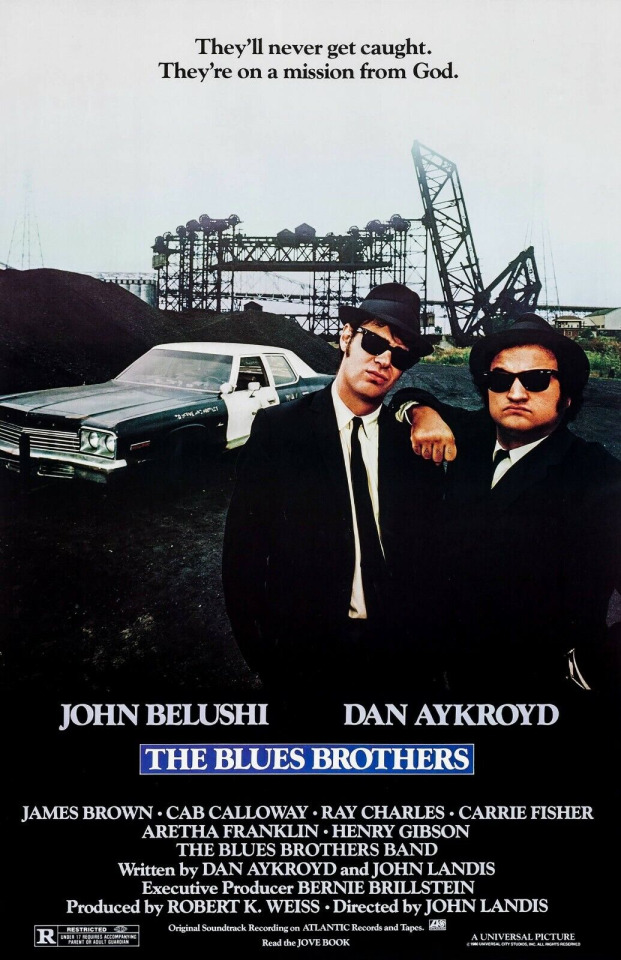
What are the social aspects within the film’s narrative that align with the film’s songs?
The Blues Brothers establishes the group of Nazi’s that follows them around as a central villain and point of ridicule throughout the film. Policing in general and law enforcement are also another social aspect within the narrative as both Jake and Elwood are running from the law. The film pokes fun at the extreme lengths law enforcement takes to arrest the Blues Brothers and their failure to do so. The film has several car chases with one spanning over 20 minutes, and a record of one hundred and four cars destroyed during filming. These ridiculous stunts constantly reaffirm that the Blues Brothers are on the other side of law enforcement. This type of narrative–music as rebellion and performance as protest–is bolstered by the film’s Rock and Roll and R&B soundtrack.
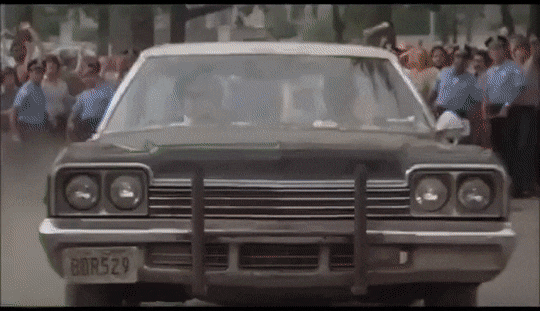
How do the historiographies of previously recorded songs inform audience relationships with the musical’s narrative and performers?
The historiographies of these previously recorded songs are what make this film special. The audience already has strong ties to the iconic performers and their songs, so any decontextualization for narrative continuity is minor. That is to say, this film doesn’t attempt to disguise performers like Aretha Franklin, Ray Charles, and Cab Calloway. It embraces their presence and the influence they hold as musicians. For example, “Think” by Aretha Franklin was released during the civil rights movement. When she performs it in The Blues Brothers, the narrative shifts the song's original meaning. Her character Mrs. Murphy asks her husband to think before he leaves to go off with the band. Despite this shift, the song’s original context is still very attached to the performance.
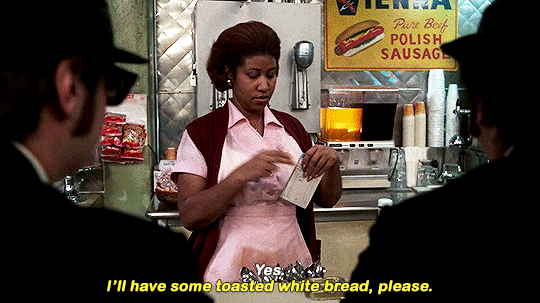
youtube
What musical genre/style drives the film’s score, and how does the genre/style (re)define the film as a musical?
Soul and R&B drive the film’s score with performances like “Think” performed by Aretha Franklin, “Minnie the Moocher” performed by Cab Calloway, and “Shake A Tail Feather” by Ray Charles. I think this choice of genre defines The Blues Brothers unique feel and makes the dry humor and slapstick comedy so successful. Despite being set in 1980, the film pays homage to iconic performers of the late 50s and 60s. Elwood and Jake are even made fun of for their black hats, sunglasses, and suits, but they maintain their signature “old-school” style throughout. The film's commitment to incredible performers is just one of the reasons it has become a classic.
youtube
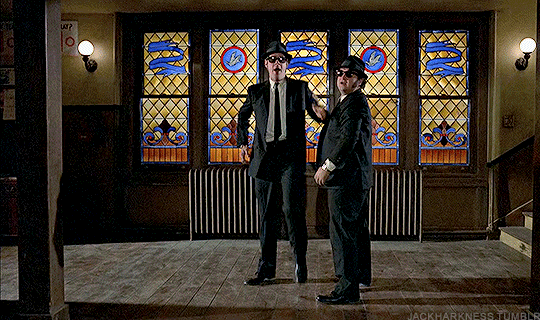
13 notes
·
View notes
Text
Mamma Mia!
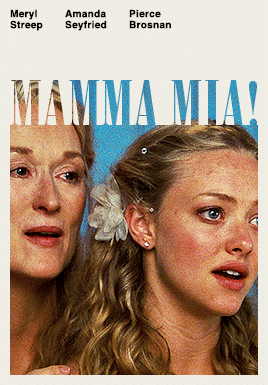
What are the social aspects within the film’s narrative that align with the film’s songs?
"Mamma Mia!" is set on a Greek island and reflects the cultural and societal aspects of Mediterranean life. The film portrays a close-knit community where traditions, family ties, and local customs play a significant role. Its setting embodies a sense of escapism and freedom, which resonates with the carefree and joyous spirit of many of ABBA's songs.
Additionally, the film's narrative touches upon themes of family values, female empowerment, and the evolving roles of women. Donna is portrayed as a strong and independent woman who raised her daughter Sophie on her own. This portrayal aligns with the changing societal attitudes towards women's independence and empowerment during the time the film was made and set.

How do the historiographies of previously recorded songs inform audience relationships with the musical’s narrative and performers?
ABBA's songs, deeply rooted in the 1970s and 1980s, reflect the cultural and societal attitudes of their time. In "Mamma Mia!", the film's late 20th-century setting and characters' experiences resonate with these themes. For instance, "Money, Money, Money" aptly captures the economic struggles faced by Donna as she tries to make ends meet running her hotel on the Greek island. The song's lyrics about financial hardship align with Donna's determination to provide for herself and Sophie. Additionally, "Dancing Queen" encapsulates the youthful spirit of Sophie and her friends as they prepare for the wedding. The song's celebration of youth, joy, and freedom mirrors Sophie's excitement and anticipation for her big day. These songs enrich the film's narrative by adding emotional depth to the characters' experiences and enhancing the audience's engagement with their stories.

What musical genre/style drives the film’s score, and how does the genre/style (re)define the film as a musical?
The pop music genre in "Mamma Mia!" complements the film's portrayal of a Mediterranean island community in the late 20th century. ABBA's upbeat and catchy songs, such as "Waterloo" and "Voulez-Vous," encapsulate the energy and optimism of that era.
Unlike traditional musicals with original scores, "Mamma Mia!" uses pre-existing songs to tell its story, making it distinctively vibrant and accessible to audiences familiar with ABBA's music. This approach not only celebrates the timeless appeal of ABBA's songs but also creates a nostalgic and engaging musical experience that resonates with fans and new audiences alike.
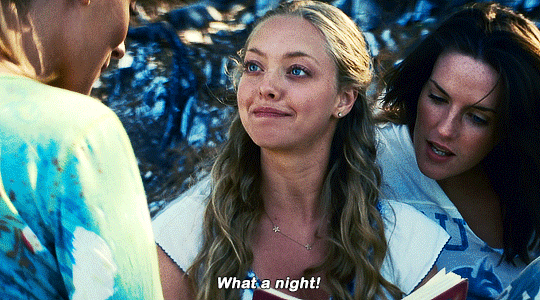
youtube
13 notes
·
View notes
Text
Roundtable 3: Till The Clouds Roll By (1946)
Richard Whorf's Till the Clouds Roll By is a 1946 biopic of American Broadway pioneer Jerome Kern. It features renditions of Kern's famous songs from his musical plays performed by contemporary stage artists. The film follows Kern's journey from his early days as a struggling songwriter to his rise as one of the most influential figures in American musical theater.
Jerome Kern was an American composer whose breakthrough came with the musical Show Boat (1927). Throughout his career, Kern composed numerous hit songs that became standards of the American songbook. Kern's influence extended beyond Broadway, as he also composed music for Hollywood films. He received multiple Academy Award nominations for his film work, including for the score of "Swing Time" (1936), which featured the classic song "The Way You Look Tonight."

What are the social aspects within the film’s narrative that align with the film’s songs?
In Till the Clouds Roll By, every song serves as a snapshot from one of Jerome Kern's musicals. Each of his musicals has various themes that are reflected in these performances. For instance, the film delves into the pursuit of artistic success and recognition within the competitive world of musical theater, as seen in the song "Make Believe" from Showboat. Performances of songs like "Can't Help Lovin' Dat Man" and "The Folks Who Live on the Hill" create sentiments of longing, desire, and devotion, mirroring the characters' experiences of love and heartache against the backdrop of their personal and professional lives.
Through these performances, audiences are transported into the intimate moments of the characters' lives, witnessing the highs and lows of their relationships unfold on screen. The emotional depth and vulnerability conveyed through these songs resonate with audiences on a profound level, inviting them to reflect on their own experiences of love and longing.
2. How do the historiographies of previously recorded songs inform audience relationships with the musical's narrative and performers?
By incorporating these well-known songs into the film, Till the Clouds Roll By establishes a connection with audiences who may be familiar with the original recordings. The historiographies of these songs evoke a sense of nostalgia and recognition, inviting audiences to engage with Kern's work on a deeper level. As audiences listen to familiar tunes reinterpreted within the context of the film, they are reminded of past performances and experiences, enriching their understanding and appreciation of the narrative unfolding on screen. Each performance is set against the backdrop of theatrical stages that include similar set designs and costumes to those of Kern's musical plays.
A notable example of this homage is Caleb Peterson's rendition of "Ol' Man River" from Kern's seminal work, Show Boat. In the film, we see the character Joe, a Black dock worker grappling with the struggles faced by African Americans along the Mississippi River. Peterson's performance captures the essence of Kern's vision for the film. He is dressed in attire similar to Joe's character and surrounded by a stage design reminiscent of the riverfront setting.
youtube
Later on, the film's set design shifts completely and we see Frank Sinatra's rendition of "Ol' Man River" towards the end. Sinatra's performance is set against the backdrop of a grand orchestra and adorned in an all-white suit.
youtube
While Peterson's rendition authentically captures the struggles of marginalized communities and serves as a powerful commentary on racial inequality, Sinatra's interpretation almost overshadows this narrative depth. The contrast between Peterson's portrayal of a Black dock worker and Sinatra's performance with overwhelming privilege and sophistication, dilutes the real meaning behind the song, shifting the focus away from the authentic representation of racial struggle.

3. What musical genre/style drives the film’s score, and how does the genre/style (re)define the film as a musical?
Alberto Mira's "Introduction: The Hollywood Musical is Dead. Long Live the Hollywood Musical!" provides valuable insights into the evolution and significance of the Hollywood musical genre, which can be applied to understanding Till The Clouds Roll By. Mira's discussion of the Hollywood musical's cultural significance underscores the importance of the genre as a reflection of societal values and aspirations. Till the Clouds Roll By embodies this aspect by exploring themes of ambition, love, and social justice through its musical performances and narrative arcs. The film serves as a testament to the enduring appeal of the Hollywood musical genre and its ability to resonate with audiences across generations.
The film's score is predominantly driven by the musical genre/style of traditional Broadway and musical theater. This genre/style is characterized by orchestration, melodies, and elaborate vocal performances that serve to advance the narrative and evoke the emotions of the different characters. The genre/style of traditional Broadway and musical theater (re)defines the film as a musical by infusing it with elements such as elaborate song and dance numbers, theatrical staging, and larger-than-life performances. These elements serve to heighten the emotional impact of the narrative and create a sense of spectacle that is characteristic of the musical genre.
10 notes
·
View notes